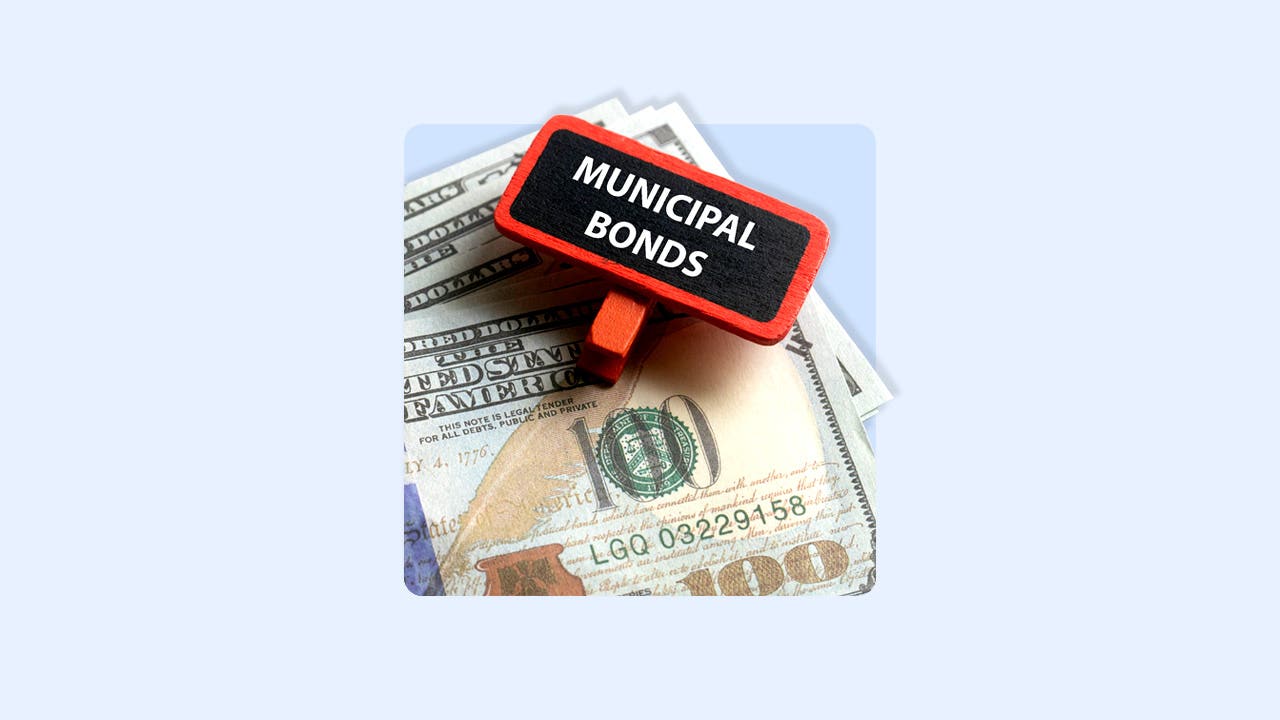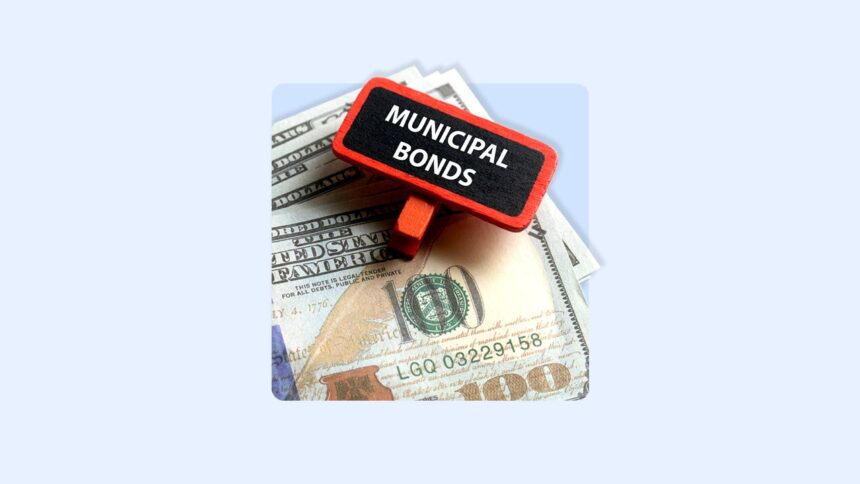
Mohamad Faizal Bin Ramli/ Getty Images; Illustrations by Austin Coulerez/Bankrate
While equities have attracted most attention in the world of investment, municipal bonds can play a key role in a diverse portfolio and may have attractive tax benefits. Municipal bonds, or munis, are issued by state and local governments to fund a variety of government projects. Unlike most bonds, they are usually exempt from federal income tax, making them an attractive option for high-tax investors.
This introduces you to other things you need to know about municipal bonds and some of the best funds to consider for your portfolio.
Top local government funds
Data as of June 6, 2025.
Vanguard Taxempt Bond ETF (VTEB)
Vanguard Taxempt Bond ETF is an index fund that seeks to track the performance of benchmarks measuring the investment grade U.S. city bond market. At least 80% of the fund’s assets are invested in securities whose income is exempt from federal income tax.
- Annual revenue over 5 years: 0.43%
- yield: 3.90%
- Cost Ratio: 0.03%
- Total assets: $38.1 billion
Fidelity Tax-Free Bond Fund (FTABX)
The Fidelity Tax-Free Bond Fund aims to provide high current yields that are exempt from federal income tax. Funds typically invest in investment grade securities where at least 80% of their assets are exempt from federal income tax. The fund may engage in trading that has leveraged effects on the fund, increasing profits and losses.
- Annual revenue over 5 years: 1.03%
- yield: 3.88%
- Cost Ratio: 0.25%
- Total assets: $3.3 billion
T.Row Price Tax-Free High Yield Fund (PRFHX)
T. Rowe’s tax-free high-yield fund seeks high levels of income that are exempt from federal income tax by investing in long-term municipal securities at low-to-medium investment grades. The fund may invest a significant portion of its assets in municipal “junk” bonds, as long as it accounts for more than 10% of its assets, and may purchase bonds by default.
- Annual revenue over 5 years: 2.05%
- yield: 4.04%
- Cost Ratio: 0.63%
- Total assets: $3.2 billion
BlackRock Allocated Target Stock: Series E Fund (BATEX)
The BlackRock Fund aims to provide investors with higher federally-free income than other Muni bond funds investing in investment-grade securities by purchasing both investors and investment-grade municipal bonds. Approximately half of the funds are invested in local government “junk” bonds, allowing up to 10% of their assets to invest in distressed securities.
- Annual revenue over 5 years: 3.37%
- yield: 5.35%
- Cost Ratio: 0.11%
- Total assets: $482.5 million
Macquarie National Highfield City Bond Fund Institution Class (DVHIX)
Macquarie National High Yield Municipal Bond Fund invests in intermediate and low grade municipal bonds to generate high levels of current income that are exempt from federal income tax. The fund currently holds debt from locations such as Puerto Rico and California.
- Annual revenue over 5 years: 2.46%
- yield: 5.04%
- Cost Ratio: 0.60%
- Total assets: $3.4 billion
Vanguard High-Yield Taxempt-exempt Fund Admiral Shares (Vwalx)
The Vanguard High-Yield Taxempt Fund aims to invest in long-term municipal bonds with moderate to high credit quality and earn high, sustainable current income exempted from federal income tax. The average portfolio maturity is 10-25 years, focusing on sectors that represent relative value.
- Annual revenue over 5 years: 1.49%
- yield: 4.56%
- Cost Ratio: 0.09%
- Total assets: $15.6 billion
What are municipal bonds and how do they work?
Municipal bonds are issued by state and local governments to raise funds for public projects such as schools and roads. General obligation debt is used for projects that are unlikely to generate revenue, but revenue debt is paid back along with revenue from certain projects such as toll roads and entertainment centres.
Municipal bonds may not sound like the most exciting investment, but they usually benefit from federal taxes. Plus, in many cases, you don’t even have state or local taxes. Due to this tax advantage, when adjusted to tax savings, a low yield on municipal bonds is actually more attractive than a higher yield taxable bond.
Here’s how it works: Imagine you are a high-income earner with a 37% federal income tax rate and a 7% state tax rate. We are considering municipal bonds with a yield of 3% and taxable bonds with a yield of 4%.
Tax Equivalent Yield = Interest Rate / (1 – Tax Rate)
Municipal bonds have a tax yield of almost 4.8% based solely on federal tax savings, and tax yields rise to 5.4% when considering additional state tax savings.
High-tax investors benefit most from the tax benefits of municipal bonds, but Munis may be suitable for your portfolio, even if you are in a lower tax range. City bonds generally have less risk of defaulting and are less volatile than high-risk corporate bonds and stocks.
You can invest in individual municipal bonds, but it’s easier to invest in local bond funds. Investing in a fund means that you don’t need to research all individual investments, and you will get the benefits of holding a diverse portfolio of municipal bonds (such as reducing risk).
Conclusion
Municipal bonds are unlikely to generate as high returns as other investments, such as stocks, but they can offer tax benefits to your portfolio, especially if you are in a high-income tax bracket. Because of these tax benefits, it makes sense to hold a local government bond fund with a tax account solely, rather than a retirement account such as a 401(k) or IRA, which already have tax benefits.
Editorial Disclaimer: All investors are advised to conduct their own independent research into investment strategies before making an investment decision. Furthermore, investors recommend that past investment products performance is not a guarantee of future price increases.
Was this page helpful?
Why you want feedback?
Feedback helps us improve our content and services. It takes less than a minute to complete.
Your response is anonymous and will only be used to improve our website.
Helps to improve content


